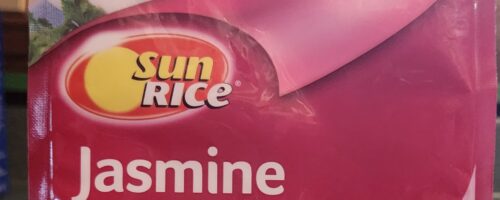
Phen Nom Pen Cambodia
How is it produced?
Rice is produced on small land holdings of 2 acres or less that are farmed by family members. Rice production is labour intensive with most of the paddies being cultivated, planted, weeded and harvested by hand. Quite often children do not attend school because they need to work on the farm.
Describe the supply chain to the store shelf in Canada:
Paddy rice, or green rice is harvested from flooded fields. Many farmers do not have the means to transport it to the mill for processing. Brokers buy green rice from the field for pennies and transport it to a mill for processing. Cambodia lacks processing mills so some of their rice is exported to Thailand for milling. The mill dries the rice, husks it and prepares it for domestic or export use. Rice is exported in bulk in ships to distributors and packaged for consumer use or further processed into food products like noodles and crackers. Cambodian rice may travel to Thailand for processing and then on to Australia, United States or Canada for distribution to grocery stores.
What is the power balance between the producer and seller?
Rice farmers have no power to ask for a fair price for their product. Quite often brokers set the purchase price in the Spring when farmers purchase their seeds. Farmers are often not aware of the market value of the rice they produce. They live in extreme poverty and do not have the option to take their rice elsewhere for a better price.
Here is a link to a video that looks at the human cost of rice:
Can you recommend changes to the system to improve the balance?
The responsible development of the export market for rice in Cambodia can be accomplished if there is substantial investment in infrastructure like roads, water management systems, rice processing mills, transportation and access to reliable power.
Cambodia needs direct network capability with world markets without having to rely upon middle men.
Transfer of technology and information to the agricultural sector to assist in modernization.
Education of farmers for best practices in production and farm management.
Access to the use of equipment to aid in land preparation, tilling planting, weed management, irrigation and harvesting activities.
Increased access to local financing, business support and rice mills to fully participate in market opportunities.
Minimum wage and labour standards. Protection of worker’s rights.
Mechanisms for dispute resolution at all levels, grower and buyer, local, regulatory and governmental.
Co-operation from other nations in sharing information and resources to assist in economic development.
Training opportunities for rural communities to become drivers of economic development.
References/Resources:
Chu, Lily, and Ali Khadr. “COUNTRY ASSISTANCE EVALUATION APPROACH PAPER Country Background 1. Cambodia, with its po.” | Independent Evaluation Group, 2008, https://ieg.worldbankgroup.org/reports/cambodia-country-assistance-evaluation-approach-paper. Accessed 17 January 2024.
Clement, Matthew, et al. “Rice Imperialism: The Agribusiness Threat to Third World Rice Production.” Monthly Review, 1 February 2004, https://monthlyreview.org/2004/02/01/rice-imperialism-the-agribusiness-threat-to-third-world-rice-production/. Accessed 27 January 2024.
Domashneva, Helena. “NGOs in Cambodia: It’s Complicated – The Diplomat.” The Diplomat, 3 December 2013, https://thediplomat.com/2013/12/ngos-in-cambodia-its-complicated/. Accessed 27 January 2024.
Held, Lisa Elaine. “The Environmental Impacts of Rice Production.” FoodPrint, 1 October 2021, https://foodprint.org/blog/environmental-impacts-of-rice-production/. Accessed 27 January 2024.
International Monetary Fund (IMF). “Policy Framework Paper–Cambodia: Enhanced Structural Adjustment Facility Policy Framework Paper, 1999-2002 Table of Contents.” International Monetary Fund, 1999, https://www.imf.org/external/np/pfp/1999/cambodia/index.htm. Accessed 27 January 2024.

